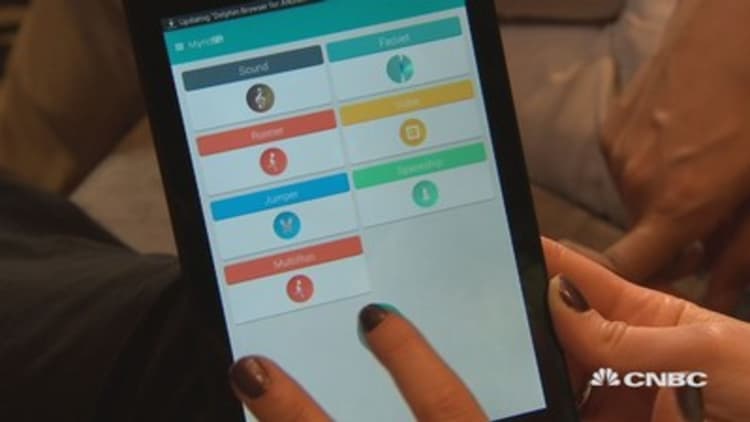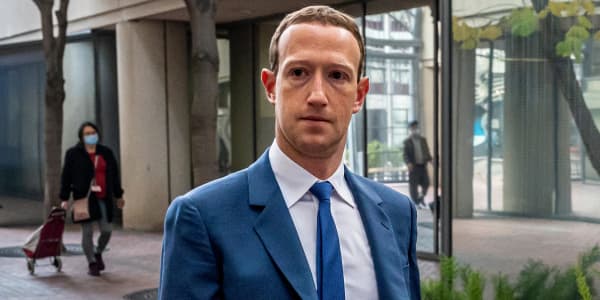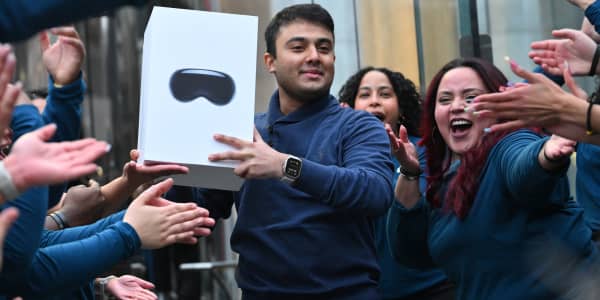
Most people have either heard of Attention Deficit Hyperactivity Disorder (ADHD) or know someone who has been affected by it.
Arab-Israeli entrepreneur Aziz Kaddan has seen firsthand the negative side effects associated with some of the ADHD medication prescribed to children. That's what inspired him to found Myndlift, a technology company that aims to help people with ADHD in a way that replaces the need for medication.
More than 1 in 10 children ages 4 through 17 was diagnosed with ADHD in 2011, according to data from the Centers for Disease Control and Prevention (CDC), the most recent year the agency has tracked these statistics.
Myndlift software uses neurofeedback, or electrodes on the scalp, to measure brain activity. The brain activity is tracked by a headset and then sent to a mobile device app to show one's concentration levels. A Web dashboard is provided to parents and clinicians to monitor progress.
The technology includes gaming and mobile exercises that help one to concentrate, and the neurofeedback tracks the concentration levels via the headset. It is designed for both children and adults—the training program is tailored per age group.
Currently, a majority of those with ADHD take medication to help them concentrate. Of the children with current ADHD, 69 percent were taking medication for ADHD treatment, according to the CDC.
Kaddan, CEO of Myndlift, said he worked with a team of medical practitioners, software engineers and designers to create the wearable technology with the hope it provides a drug-free solution to improve concentration and focus in people with ADHD.
Less than 1 in 3 children with ADHD received both medication treatment and behavioral therapy, the preferred treatment approach for children ages 6 and older, according to the CDC 2011 report. Only half of preschoolers (ages 4 to 5) with ADHD received behavioral therapy, which is the recommended first-line treatment for this group, the CDC said. About half of preschoolers with ADHD were taking medication for ADHD, and about 1 in 4 were treated only with medication.
Read MoreThe most highly valued biotech start-up in the world
Myndlift is planning to enter the U.S. market through its affiliation with New York City-based ICONYC Labs, an accelerator program focused on early-stage Israeli technology start-ups looking to build a presence in the U.S. The company expects to release the product in early 2016—registration to be a beta tester can already be completed on the Myndlift website.
ICONYC start-ups receive business, funding and operations support. Myndlift is among the initial group of 5 tech start-ups selected from 200-plus candidates for the accelerator program. (Myndlift was featured as a top start-up at an event called Braintech 2015, held in Tel Aviv.)
Gaming a billion-dollar-plus market
It's a pharmaceutical market that has been growing.
Global market revenue for ADHD therapeutics was $3.8 billion in 2010 and is expected to hit $9.4 billion by 2020, according to a report released by GBI Research. "The current ADHD therapeutics market is flooded with generics and dominated by the use of extended-release (ER) stimulant drugs," according to GBI Research.
The No. 1 ADHD drug, Shire's Vyvanse, generated sales of more than $1 billion in the first nine months of 2014, and Shire CEO Flemming Ornskov recently told Reuters that Shire's goal is to generate annual company revenue of $10 billion by 2020. As much as $1.5 billion of that annual goal could be ADHD prescriptions at peak sales for Vyvanse in U.S. market between now and 2020, according to David Steinberg, pharmaceuticals analyst at Jefferies.
The CDC 2011 data found that 11 percent of children 4 to 17 years of age (6.4 million) had been diagnosed with ADHD, up from 7.8 percent in 2003 and 9.5 percent in 2007. From 1996 to 2006, the rates of ADHD diagnosis among children increased an average of 3 percent annually, and that rose to 5 percent annually from 2003 through 2011.
The number of adult ADHD cases is rising also. GBI said in its report that changes in diagnostic criteria have reduced the threshold for diagnosis, and that will increase the adult ADHD population seeking remedies. A little more than 4 percent of U.S. adults are believed to suffer from ADHD, and 41.3 percent of these cases are classified as severe and would be eligible for therapeutic intervention, GBI stated.
"The global market is not expected to be driven by drug approvals, but primarily by a growing prevalence, increase in rates of diagnosis, and therefore eligible treatment population," the GBI report concluded.
Read MoreMeet the 2015 CNBC Disruptor 50 companies
Myndlift does not need FDA approval, because its current technology is not considered a medical device. Kaddan said it is described as a "solution to improve attention that can be a great benefit for people with attention deficit" instead of a "treatment for ADHD." However, Myndlift does plan to ultimately bring a product to market that will go through the regulatory process, though Kaddan declined to be more specific.
My ultimate goal is to bring this technique—neurofeedback—to mobile, making it accessible to all people.Aziz KaddanMyndlift CEO and founder
Steinberg said if tech start-ups like Myndlift ever seek FDA approval, they may find the ADHD market a tough one to penetrate. For one, he described it as mature space, with Shire the only major player that is marketing branded products (it also sells an earlier drug, Adderall XR). The pediatric prescription market is slow-growing, and the bigger opportunity in the adult market is still in the early stage of adoption.
Steinberg also said behavioral modification doesn't have a good track record. "It's been tried over many years through psychiatrists. I'd be skeptical," he said. A technology-based solution, if it can generate impressive results, could lead to a paradigm shift in treatment, but until the data is generated, there's nothing for a medical professional to recommend. Generating those types of results is a big if.
"My ultimate goal is to bring this technique—neurofeedback—to mobile, making it accessible to all people," Kaddan said.
The pharmaceutical giant has a different view.
"Shire's view is that they are the ADHD market. We agree," Steinberg said.





